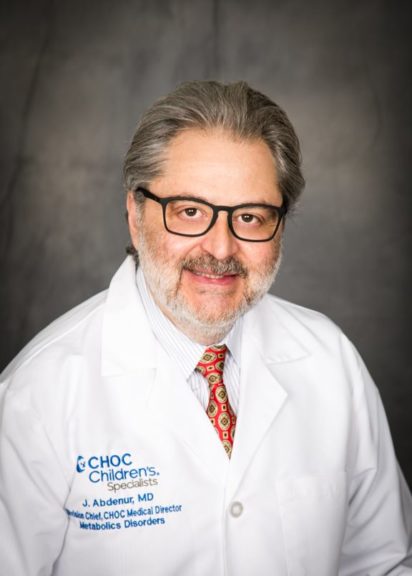Machine learning algorithms could make a dramatic difference when it comes to diagnosing children with rare diseases, two CHOC doctors said in a recent webinar.
Although the use of artificial intelligence (AI) in diagnosing medical conditions is in its infancy stages, the potential is huge, said Dr. Jose Abdenur and Dr. Terence Sanger, speaking on a panel during a two-week summit on rare diseases hosted by Global Genes, an Aliso Viejo-based non-profit that advocates for the rare disease community.


officer at CHOC
“Human decision making is very, very good,” said Dr. Sanger, vice president for research and chief scientific officer at CHOC. “But we’re not very good at incorporating tens of thousands of pieces of information into making these decisions.”
That’s where machine learning could be of immense value, he and Dr. Abdenur said in the one-hour discussion on Sept. 22, which can be viewed in its entirety here.
Machine learning involves the use of computer algorithms that improve automatically by building mathematical models based on reams of data. This makes AI particularly valuable for improving the rare disease diagnosis process, which remains far from perfect, says Abdenur, chief of the division of metabolic disorders at CHOC and director of CHOC’s metabolic laboratory.
Although great strides are being made in diagnosing rare diseases through such processes as rapid whole genome sequencing, 40 percent of families with sick children still do not have diagnoses, Dr. Abdenur said.
“We’re doing better, but we’re definitely not good enough,” he said. “We hope in the future that artificial intelligence and machine learning will help us (reach diagnoses faster).”
In diagnosing patients, clinicians consider a list of possible conditions or diseases that could be causing symptoms – what’s known as making a differential diagnosis. They consider such things as a patient’s symptoms, his or her medical history, basic lab results, and a physical examination.
With AI, a virtually limitless amount of information beyond that – such as similar symptoms that have occurred in patients around the world, the environment they live in, etc. – could be factored into helping make differential diagnoses.
Dr. Sanger compared the benefits of using AI in diagnosing patients to a standard camera – what’s used now – to a wide-angel lens that can take in much more information, which machine learning would provide.
“If you have an avalanche of information, (physicians) can’t take all of it in themselves,” Dr. Abdenur noted.
But a sophisticated machine-learning program could, he and other panelists said.
An algorithm that gets smarter over time would lead to faster, simpler, accurate, and earlier diagnoses, said panel member Annastasiah Mhaka, co-founder of the Alliance for AI in Healthcare.
“Data is at the heart of (learning more about rare childhood diseases), and AI would help along every step of the way,” said another panelist, Sebastien Lefebvre, an analyst with Alexion Pharmaceuticals.
Both Dr. Abdenur and Dr. Sanger agreed that AI could be used to augment a clinician’s decision, but never replace it.
“(AI) never makes a decision for you,” Sanger said. “It just assists in the decision making.”
Newly emerging technologies such as machine learning in healthcare could lead to lower healthcare costs and better treatment, Mhaka said.
“Diagnosis needs are huge and unmet in the (rare disease) population,” she noted.
Learn more about rare disease research at CHOC.




